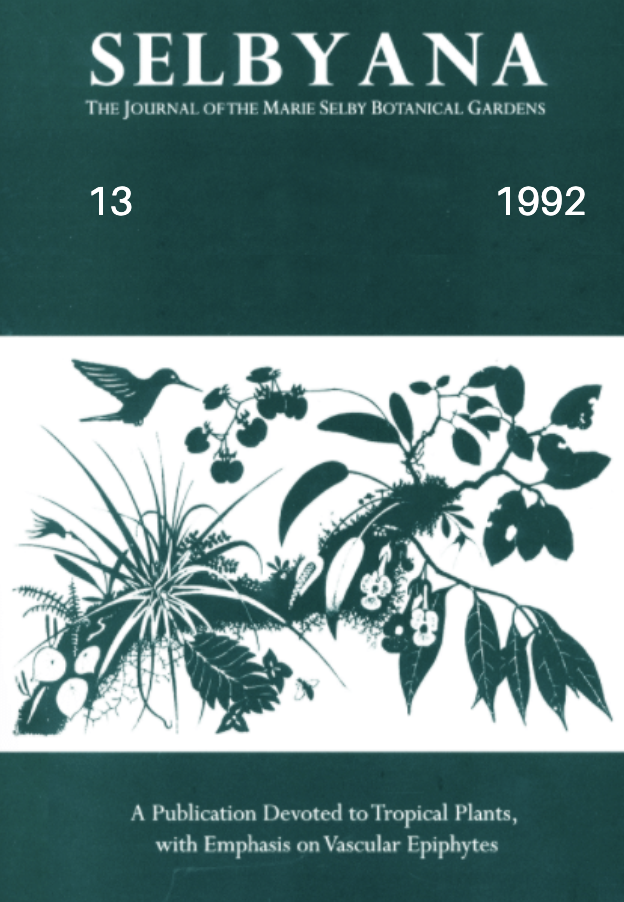Abstract
The purpose ofthis paper is to call attention to the importance ofepiphytes in understanding how global atmospheric changes impact tropical forests. The Luquillo Experimental Forest (LEF), like other peaks in the Caribbean, intercepts at least five major global weather systems: (I) trade winds originating in the Azores; (2) tropical depressions and hurricanes originating in western Africa; (3) northern cold fronts originating in the polar regions ofNorth America; and systems originating (4) in the Pacific and (5) the Amazon basin. Each ofthese "global airsheds" has a particular return frequency, associated temperature and climatic conditions, and different chemical conditions in rain and cloud water. Epiphytes are the organisms with the closest interactions with these systems because they absorb water and nutrients directly from the atmosphere and their metabolism responds to prevailing conditions associated with each airshed. In order to detect effects ofglobal change on epiphyte communities, it will be necessary to build a longterm quantitative record of ecological information ofthese organisms. In this paper, we review the information available for the LEF and outline our proposed program to measure ecosystems effects ofglobal change via epiphytic communities. Our focus will be on biomass accumulation, nutrient uptake, and hydrological fluxes.
Open Access and Copyright Notice
Selbyana is committed to real and immediate open access for academic work. All of Selbyana's articles and reviews are free to access immediately upon publication. There are no author charges (APCs) prior to publication, and no charges for readers to download articles and reviews for their own scholarly use. To facilitate this, Selbyana depends on the financial backing of the Marie Selby Botanical Gardens, the hard work and dedication of its editorial team and advisory board, and the continuing support of its network of peer reviewers and partner institutions.
Authors are free to choose which open license they would like to use for their work. Our default license is the Creative Commons Attribution-NonCommercial 4.0 (CC BY-NC 4.0). While Selbyana’s articles can be copied by anyone for noncommercial purposes if proper credit is given, all materials are published under an open-access license with authors retaining full and permanent ownership of their work. The author grants Selbyana a perpetual, non-exclusive right to publish the work and to include it in other aggregations and indexes to achieve broader impact and visibility.
Authors are responsible for and required to ascertain that they are in possession of image rights for any and all photographs, illustrations, and figures included in their work or to obtain publication or reproduction rights from the rights holders. Contents of the journal will be registered with the Directory of Open Access Journals and similar repositories. Authors are encouraged to store their work elsewhere, for instance in institutional repositories or personal websites, including commercial sites such as academia.edu, to increase circulation (see The Effects of Open Access).
